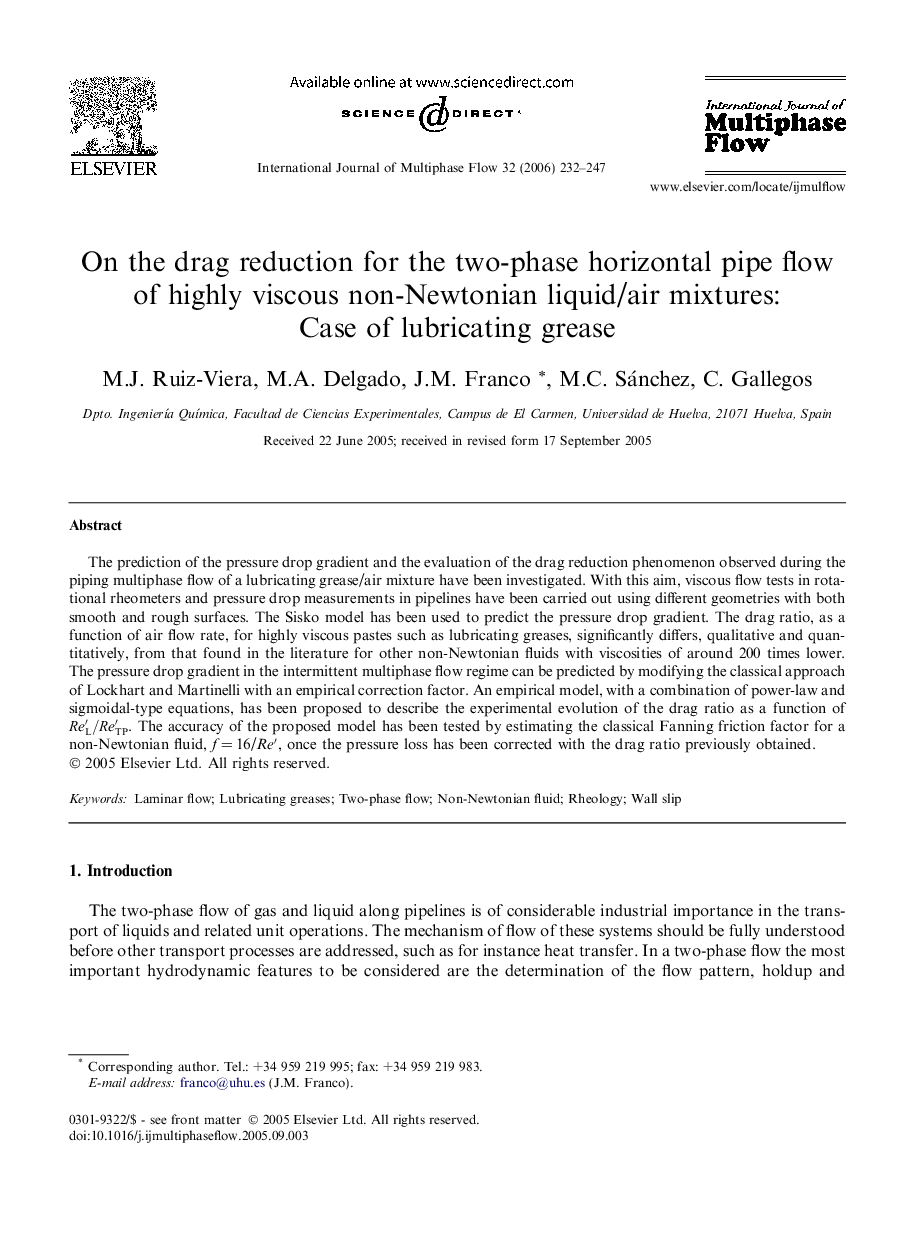| Article ID | Journal | Published Year | Pages | File Type |
|---|---|---|---|---|
| 667690 | International Journal of Multiphase Flow | 2006 | 16 Pages |
The prediction of the pressure drop gradient and the evaluation of the drag reduction phenomenon observed during the piping multiphase flow of a lubricating grease/air mixture have been investigated. With this aim, viscous flow tests in rotational rheometers and pressure drop measurements in pipelines have been carried out using different geometries with both smooth and rough surfaces. The Sisko model has been used to predict the pressure drop gradient. The drag ratio, as a function of air flow rate, for highly viscous pastes such as lubricating greases, significantly differs, qualitative and quantitatively, from that found in the literature for other non-Newtonian fluids with viscosities of around 200 times lower. The pressure drop gradient in the intermittent multiphase flow regime can be predicted by modifying the classical approach of Lockhart and Martinelli with an empirical correction factor. An empirical model, with a combination of power-law and sigmoidal-type equations, has been proposed to describe the experimental evolution of the drag ratio as a function of ReL′/ReTP′. The accuracy of the proposed model has been tested by estimating the classical Fanning friction factor for a non-Newtonian fluid, f = 16/Re′, once the pressure loss has been corrected with the drag ratio previously obtained.
